Bringing artists and local government together for lasting change
How can artists, local government, and civic organizations collaborate effectively? Art-Train brings them together and offers ongoing support for proven models of artist-led change.
Artists use their creative process and power to make meaning, share ideas, bring people together, shift conversations, challenge assumptions, and envision new futures. Studies repeatedly show that experiencing and engaging in art benefits physical and mental health, reduces loneliness, and increases community connection. Art is an immediate expression of pain and community change, as we saw in the summer of uprisings following the murder of George Floyd. Artists are key to making communities places where people want to live, participate, and contribute to social change.
Connecting to Creative People Power
Art-Train is a technical assistance program developed in a collaboration between the Center for Performance and Civic Practice (CPCP), and Springboard for the Arts. It is designed for artists, municipal agencies, community nonprofits, and arts councils in communities of all sizes across the nation. We build on examples from the field and our own successful work, and share models of how artists and communities can succeed together. By centering artists in collaboration with residents, businesses, and organizations, new relationships and ways of working emerge that build capacity and connect to larger movements for systems change and social justice.
In addition to sharing the value and impact of artist-led collaborations on local challenges, Art-Train gets to the next step: the HOW. How does a mayor, a city manager, a program director work with their local artists to devise creative, equitable approaches for public engagement, community challenges, and system redesign? How do dozens and hundreds of artists in a place–with different creative practices, experiences, connections to community–bring their expertise and skill to innovate hand in hand with residents and with the institutions that, for better or worse, steer the systems in which we all operate?
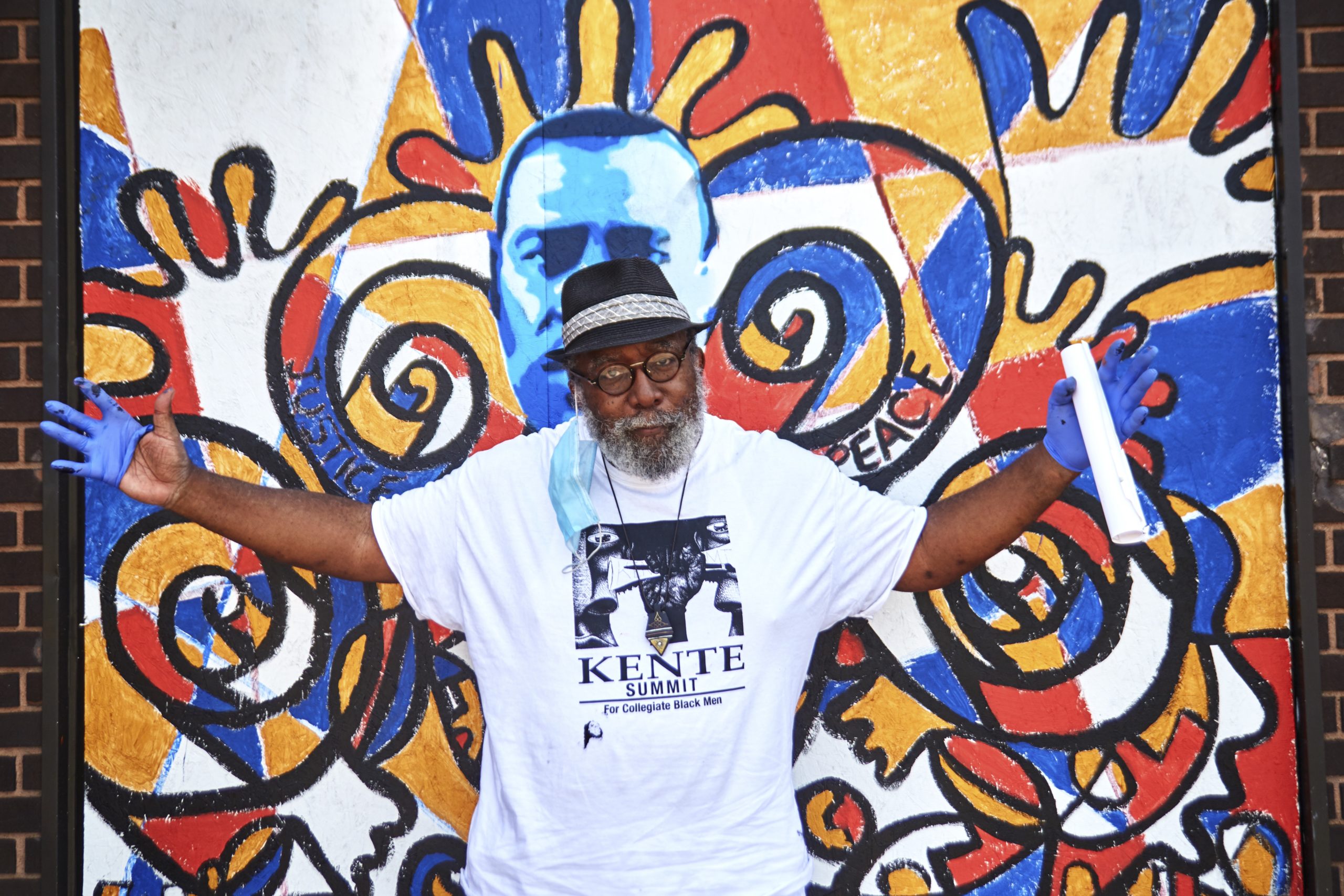
Getting to Doing
Art-Train uses broad definitions of who is an artist, encompassing creative workers of all kinds. We think of artists as anyone who thinks creatively about the world and their dynamic place in it, including visual artists, performers, writers, music creators, culture bearers, makers, artisans, storytellers, social conveners, idea purveyors, imaginaries, visionaries, students, teachers, organizers and nurturers. Artists are a powerful natural resource and they exist in every place and community. This broad definition of artists assumes that every community–geographic, racial, cultural, generational–has deeply rooted and authentic connections through its artists, making these creatives a tremendous asset and conduit in the work of imagining and making what comes next.
Art-Train also focuses on local government due to its role as an important catalyst for change. Local governments have close relationships with community members and offer more opportunities for the public to participate in decision-making. This moment is ripe for change, and the American Rescue Plan funds that have been distributed across the country are extremely flexible, allowing for recovery and local goals to be implemented through nontraditional methods, including working with local artists.
The program brings together both sides of the creative equation with two parallel training tracks. The Artist track prepares artists to work in collaboration with agencies, nonprofits, and arts councils on critical community issues. The Agency track supports government agencies, nonprofits, and arts councils as they get ready to work with local artists. Both tracks foster creative workforce development and economic growth, and authentically address community needs and concerns such as public health, housing and civic engagement. Following training, participants have access to an online resource library and regular virtual coaching sessions, so that peers can connect, share ideas, and build projects together.
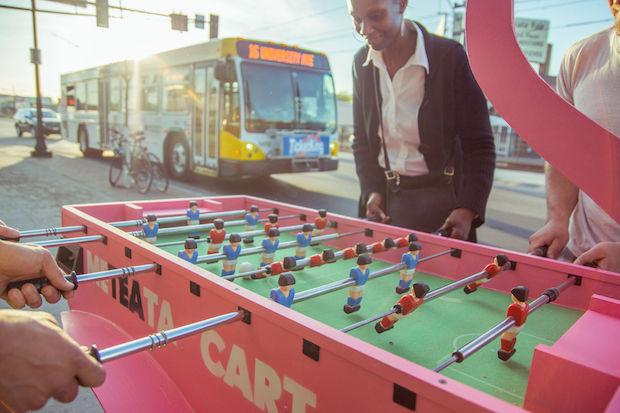
What Are the Program Models?
Three customizable program models shared in Art-Train provide the blueprints to engage local artists and were developed based on our decades of programming in collaboration with local cross-sector partners including government, civic organizations, and community groups in places small and large. The three key models for engaging artists are Open Call, Cohort, and Artist Organizers, providing an array of engagement capacities and opportunities.
All three models emphasize building on top of existing community assets and engaging people who are not often at the table. They aim to foster collaboration across sectors by giving people a common cause and an opportunity to build relationships through creative projects led by local artists. Each of the models is scalable and adaptable, based on factors including budget and staff capacity, breadth and depth of issue or goals, timeframe and location, and commitment to working with local artists.
Sallyann Kluz, director of the Office of Public Art for the Pittsburgh Arts Council, knows the challenge of getting artists to be seen for all the work they do. “Generally, I see that people working directly on arts related to municipal government see the value and the potential of this type of work,” Kluz says. “The challenge is getting leaders who may not see the vast array of how artists’ work can support public health, equity, and economic development goals to think beyond art as a ‘bonus’ and instead start to center artists and their work within their planning and funding strategies. The case studies that were shared [in Art-Train] were particularly helpful to expand that view.”
Open Call and Cohort Models
In the first two models, Open Call and Cohort, the goal is to engage as many locally rooted artists from different backgrounds as possible. Project budgets are deliberately modest, from $500 to $2500 so that more artists can participate and the work feels lower risk and therefor more accessible. At this scale, more artists feel invited even if they have not worked in or with community, or collaborated cross-sector before, and a host organization can build inclusion and equity by engaging communities that they usually are unable to reach.
In the Open Call model, a host organization puts out a request for proposals, and artists submit specific project proposals that meet the parameters. Projects are then selected based on factors that include diversity of artistic medium, artist background and connections, community/cultures previously engaged, and other criteria that the organization identifies. At this scale, selection is less about an expected product or outcome, but about the process of engagement and creation. This model is best used when the project parameters and goals are relatively straightforward, and have a concentrated geography and timeframe, or one of the goals is to kick-start numerous collaborative projects and relationships quickly.
The Artists on Main Street program is a good example of the Open Call model. Through a partnership with Rethos: Places Reimagined, a national nonprofit that focuses on revitalization through historic preservation, Springboard has provided training and project assistance for rural main street businesses and artists in 11 Minnesota communities with populations ranging from 2,500 to 42,000, to address a specific business district challenge. Following initial rounds of small-project support, program partners in each town built on the new relationships and new energies to continue working with artists—sometimes with established artists in new ways, and other times, to engage more artists.
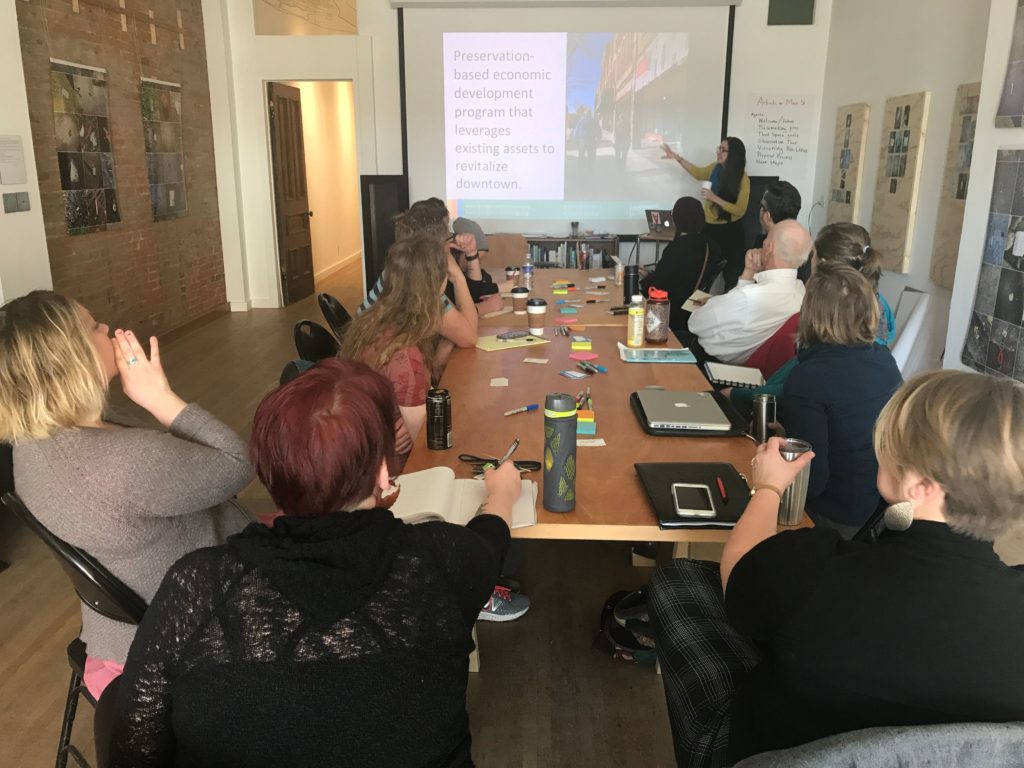
In Willmar, a community of 21,000 with a large and growing immigrant and refugee population, Artists on Main Street brought people to the downtown and engaged new residents in community conversations more successfully than any other previous programming had done. Before Artists on Main Street, the City of Willmar hosted two flagship festivals downtown, which were the only times residents thought to visit the downtown commercial area. Artist on Main Streets projects, occurring at different times, from pop-up arts activities to repurposing vacant spaces, drew people downtown and to businesses. These activities helped them see the downtown as a place to visit regularly for its services and destination businesses, creating a more regular, sustainable flow of traffic. In those smaller projects, different interest groups, networks, and people of different backgrounds were all engaged in the public realm.
As local crises and the pandemic emerged, Rethos’ Main Street director, Emily Kurash Casey, also observed that the towns that participated in Artists on Main Street were able to respond more quickly to challenges than other communities because they had already practiced working together on small, low-risk projects. They had established relationships and trust, and had a track record of working effectively toward a shared goal. In Willmar, one project featured a Presbyterian church quilters’ club reaching out to Somali mothers to sew and learn together, and the relationships that started through the project became supportive networks as the club women and Somali mothers checked in with one another during the pandemic, looked for apartments together, and shared food. The communities experienced, on a small scale, the benefits of creating shared public space, from empty lots to sidewalks to streets: a way to meet neighbors, share information, draw attention to downtowns, and draw customers into businesses. Artists on Main Street has supported more than 300 artist-led projects over the past four years, resulting in more inclusive, resilient rural communities with stronger local economies and new systems to address community challenges.
In the Cohort model, artists with diverse identities, perspectives, and practices, are invited by a host organization to form an ensemble. This model is best used with the issues are more complex and the artists and resulting projects benefit from learning and exploring the issues together before designing a project. The timeframe is longer because more time is spent upfront. The cohort studies and analyzes the community challenge with the host organization and other stakeholders, after which the artists propose modest projects that they each carry out. This model also produces more expertise amongst the cohort, which lasts beyond the program duration and which artists and collaborators may be able to leverage for future impact.
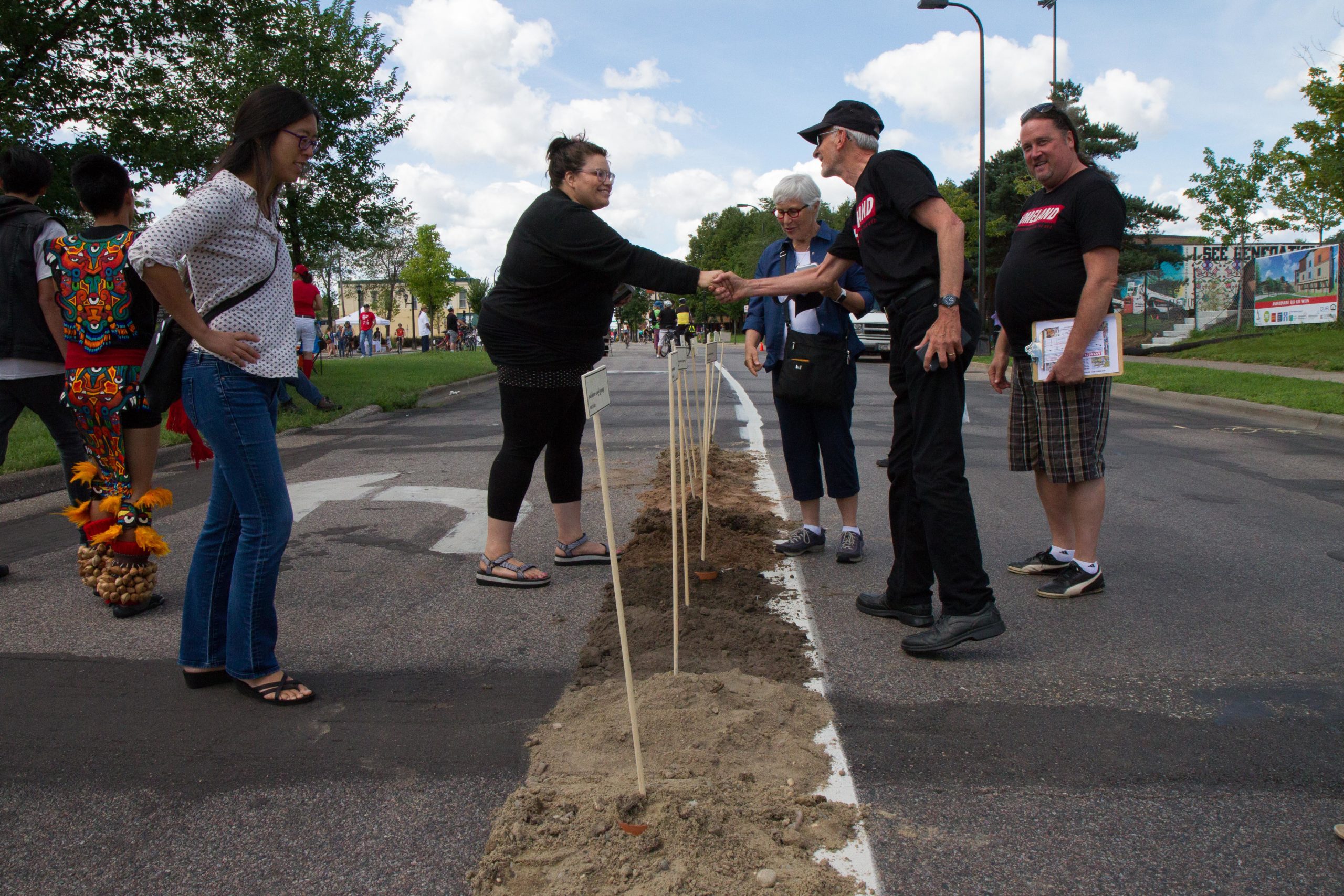
The Cohort model builds on the same principles and structure as the Open Call, but instead pulls a group of artists together to work collaboratively or in a more focused way on a project. Homeland: Native Artists Create on the Ave was a partnership between Springboard and the Native American Community Development Institute (NACDI) in 2016. NACDI is a Native-led community development organization in Minneapolis with a strong grounding in arts work, and the cohort of seven Native artists was formed to create programming to be presented during a citywide Open Street initiative. The artists collaborated on budgeting, planning, and placement of works to achieve NACDI’s goals to highlight the American Indian Cultural Corridor portion of the Open Streets event.
Similarly, a cohort of five artists is currently collaborating with Springboard and the City of St. Paul on Artists Respond: People, Place, and Prosperity, to create stories that help explain the values and benefits of the guaranteed income pilot program let by the City. This cohort is designing projects now, so stay tuned for the results of their work!
Artist Organizers
The third program model, Artist Organizers (AOs), continues to engage multiple artists while also building long-term capacity within an institution. AOs are like a community organizer and arts program manager for their host site. This model works well when the host has a commitment to artists, learning and evolving and has the great advantage of adding staff capacity to manage more local artist engagement. Rooted full-time in municipal agencies and community-invested organizations, the AOs provide skills, coordination, and creative thinking to engage community members, other local artists, and stakeholders and create new paths for their home organization to achieve its goals. AOs have a budget to engage multiple local artists and to create their own public-facing project that addresses organizational goals. Started as a pilot program in 2013 as part of the larger initiative Irrigate, the first host organizations were: Trust for Public Land, Saint Paul Public Schools, Project for Pride in Living, Frogtown Neighborhood Association, The Cornerstone Group, Partnership4Health, Otter Tail County Historical Society, and the Friends of the Kirkbride. Later host organizations have included multiple culturally based community development corporations, and the People’s Center Clinics & Services.
In 2013, as part of the first cohort of Artist Organizers, puppeteer Soozin Hirschmugl was paired with Trust for Public Land (TPL) to focus on promoting a new community greenspace strategy–privately owned public spaces (“POPS”). Hirschmugl engaged local artists in activating private spaces and making them more welcoming to the public, and created a mobile pop-up parklet trailer, SParkIt. The immediate impact of the artist projects was clear—new and more diverse residents engaged with TPL work, increased understanding and use of shared space, and a new narrative that in urban areas that lacked public greenspace, privately owned land could also be shared with the public to increase access.
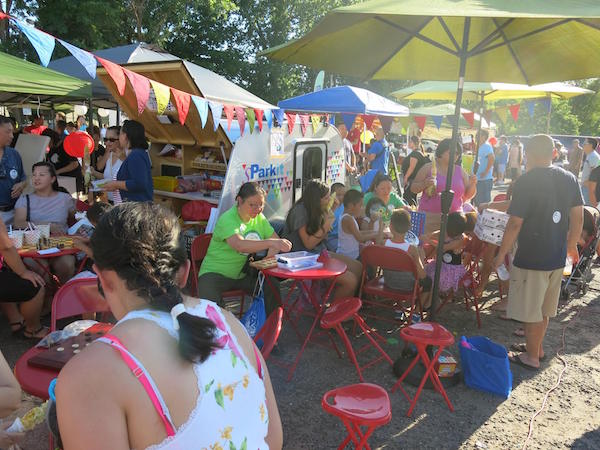
Along with those immediate successes, the organizational changes were the most significant and long-lasting. In the years following, TPL staff have reflected that those experiences with Hirschmugl–in staff meetings and the break room, and with artists she brought into the work–changed how the organization understood its relationship with and potential role to play in community: from transactional to relational. This changed how the office works with community, from acquiring land and planning parks for communities, to collaborating with residents to envision and improve shared spaces that support thriving communities. Eight years later, coming full circle, TPL is partnering with Springboard for the Arts to hire an Artist Organizer to increase community connections and combat ever-present Islamophobia by working with residents, neighborhood and religious organizations by using a park redesign project within a housing village as the impetus to engage and work together across racial and religious differences.
Another example of arts-based community development that centers an Artist Organizer comes from the CPCP’s The Catalyst Initiative, a cohort-based program that funds and helps support artist partnerships with local organizations around the nation. A 2016 Catalyst project in Philadelphia brought artist (and former Philadelphia Poet Laureate) Yolanda Wisher into collaboration with Trapeta Mayson from community nonprofit Historic Germantown. Their work together focused on using Wisher’s artistic practice and innovative project design to create an educational program that brought Germantown youth into active dialogue with historic sites and residents, inviting them to be leaders and co-creators. Their pilot program, Culture Keepers, modeled what creative engagement from youth might look like in the community, including intergenerational dialogue, recording community stories, an audio tour of the neighborhood created by young people, and setting up future programming for Historic Germantown. Their story was one of experimentation and testing, balancing vision with resources, combining art and technology to activate historic places, and creating a model that invited and empowered young people to build a relationship with and become stewards of their neighborhood.
What’s Next?
As we come through this moment, the question of what we build next is burning bright. All the models and examples above have built the foundation for Art-Train, and demonstrate the breadth of what is possible and the depth of change that can be accomplished when we commit to creative change work and collaboration. Selecting the right approach depends on capacity and context.
This is work that is relational and takes time, but everyone is starting somewhere, and starting now is critical. How you select a program model has to do with your staff and organizational systems’ capacity to implement programs and work with artists, the speed at which you want artists to do their public projects, and the depth of knowledge and relationship building you seek with and for local artists. Whether you have funds immediately available or are looking to build and make a case for a program, Art-Train can help map those assets and needs, and articulate the depth of organizational change you are open to or seeking.
Through Art-Train’s shared methods of amplifying the contributions of artists in community, and through responsive, engaged government, we can build a future that is more just, equitable, and accessible. The work of artists, culture bearers, and creative workers can help light the way.
REGISTER FOR UPCOMING ART-TRAIN TRAININGS: http://art-train.org/
Cover photo: La Luchadora screenprinting cart at a creative placemaking event in Bloomington’s South Loop Credit Bruce Silcox.
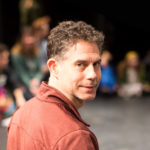 Michael Rohd is a co-founder/member of the 21-year old national, ensemble-based Sojourn Theatre. an Artist for Civic Imagination at Center for Performance and Civic Practice, and an Institute Professor at Arizona State University’s Herberger Institute for Design & the Arts. In addition to Rohd’s creative work at theaters and museums across the nation, much of his current practice focuses on supporting local capacity for equitable, cross-sector, culture-based partnerships working for public good in civic and community systems.
Michael Rohd is a co-founder/member of the 21-year old national, ensemble-based Sojourn Theatre. an Artist for Civic Imagination at Center for Performance and Civic Practice, and an Institute Professor at Arizona State University’s Herberger Institute for Design & the Arts. In addition to Rohd’s creative work at theaters and museums across the nation, much of his current practice focuses on supporting local capacity for equitable, cross-sector, culture-based partnerships working for public good in civic and community systems.
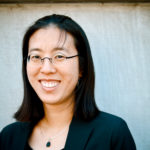 Jun-Li Wang is Associate Director, Programs at Springboard for the Arts. Jun-Li is a connector of people, places and ideas, with extensive experience in asset-based community development and place-based organizing. She has led major creative placemaking and artist-led community development projects for Springboard for the Arts, including Irrigate along St. Paul’s Green Line Light Rail construction, partnership with the International Downtown Association, and authoring the Handbook for Artists Working in Community. She holds a BA from Vassar College and an MPS in International Development from Cornell University.
Jun-Li Wang is Associate Director, Programs at Springboard for the Arts. Jun-Li is a connector of people, places and ideas, with extensive experience in asset-based community development and place-based organizing. She has led major creative placemaking and artist-led community development projects for Springboard for the Arts, including Irrigate along St. Paul’s Green Line Light Rail construction, partnership with the International Downtown Association, and authoring the Handbook for Artists Working in Community. She holds a BA from Vassar College and an MPS in International Development from Cornell University.
